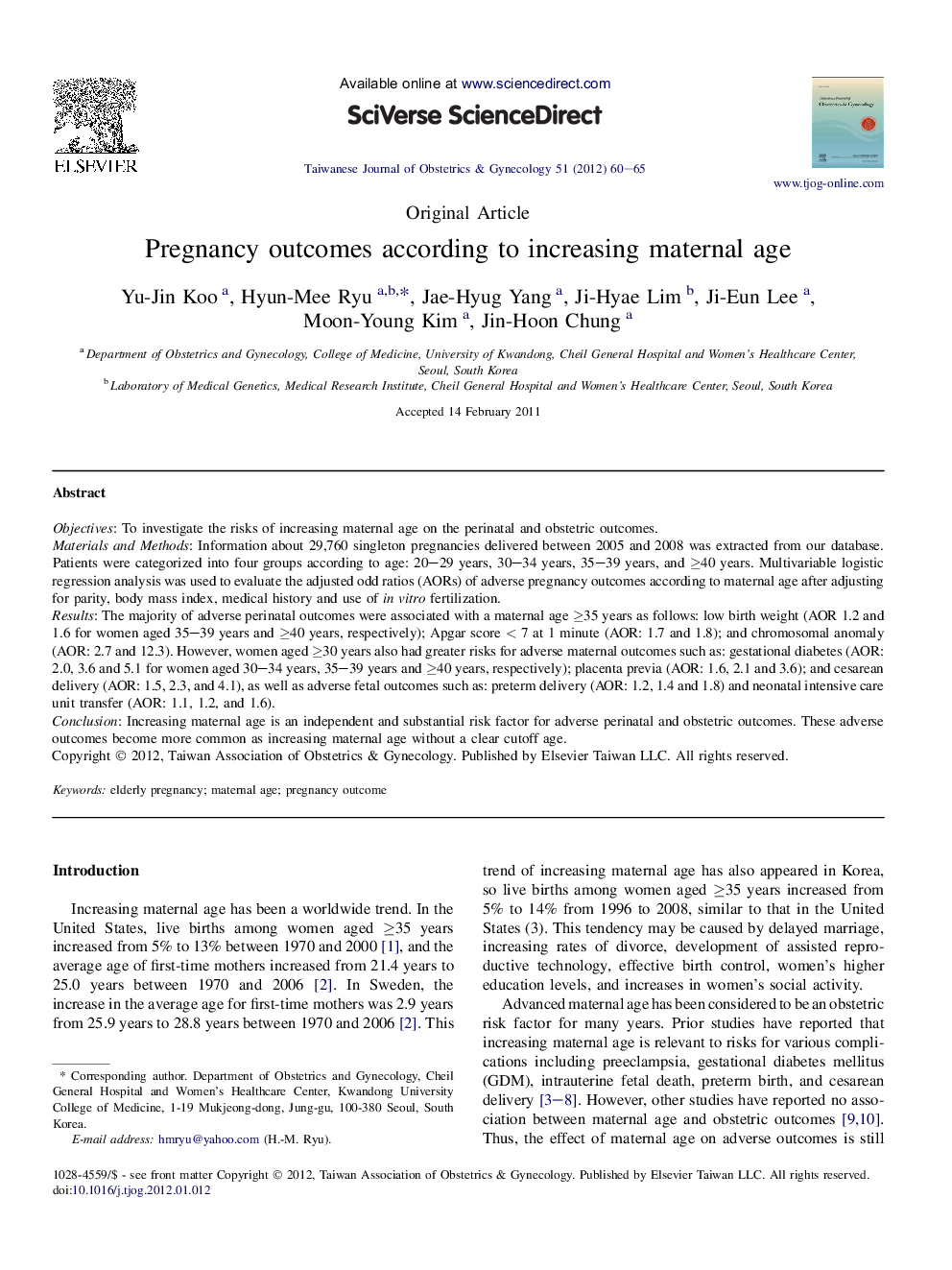| Article ID | Journal | Published Year | Pages | File Type |
|---|---|---|---|---|
| 3975321 | Taiwanese Journal of Obstetrics and Gynecology | 2012 | 6 Pages |
ObjectivesTo investigate the risks of increasing maternal age on the perinatal and obstetric outcomes.Materials and MethodsInformation about 29,760 singleton pregnancies delivered between 2005 and 2008 was extracted from our database. Patients were categorized into four groups according to age: 20–29 years, 30–34 years, 35–39 years, and ≥40 years. Multivariable logistic regression analysis was used to evaluate the adjusted odd ratios (AORs) of adverse pregnancy outcomes according to maternal age after adjusting for parity, body mass index, medical history and use of in vitro fertilization.ResultsThe majority of adverse perinatal outcomes were associated with a maternal age ≥35 years as follows: low birth weight (AOR 1.2 and 1.6 for women aged 35–39 years and ≥40 years, respectively); Apgar score < 7 at 1 minute (AOR: 1.7 and 1.8); and chromosomal anomaly (AOR: 2.7 and 12.3). However, women aged ≥30 years also had greater risks for adverse maternal outcomes such as: gestational diabetes (AOR: 2.0, 3.6 and 5.1 for women aged 30–34 years, 35–39 years and ≥40 years, respectively); placenta previa (AOR: 1.6, 2.1 and 3.6); and cesarean delivery (AOR: 1.5, 2.3, and 4.1), as well as adverse fetal outcomes such as: preterm delivery (AOR: 1.2, 1.4 and 1.8) and neonatal intensive care unit transfer (AOR: 1.1, 1.2, and 1.6).ConclusionIncreasing maternal age is an independent and substantial risk factor for adverse perinatal and obstetric outcomes. These adverse outcomes become more common as increasing maternal age without a clear cutoff age.
